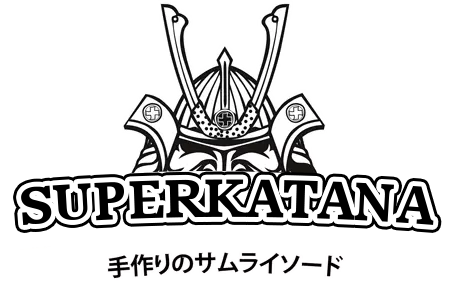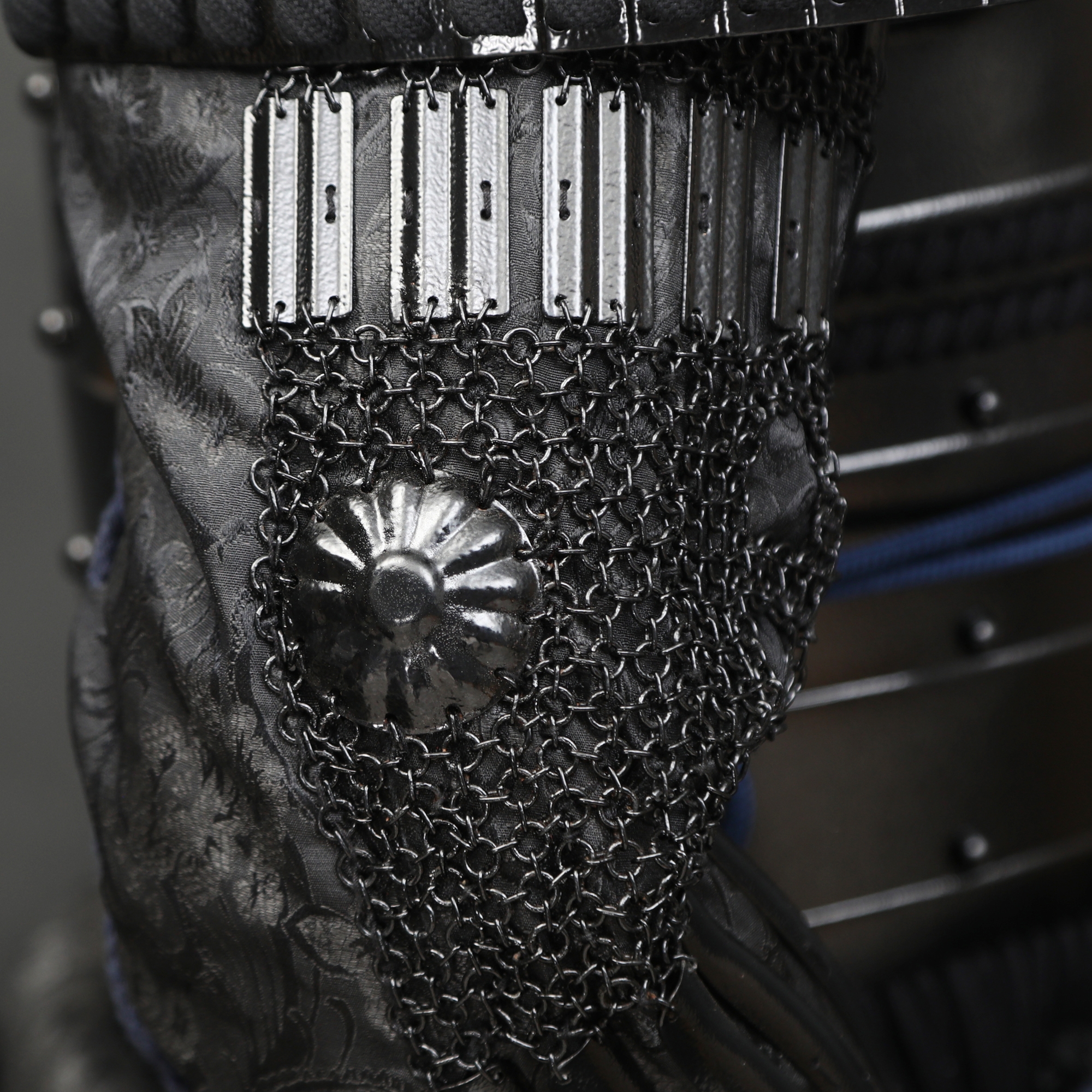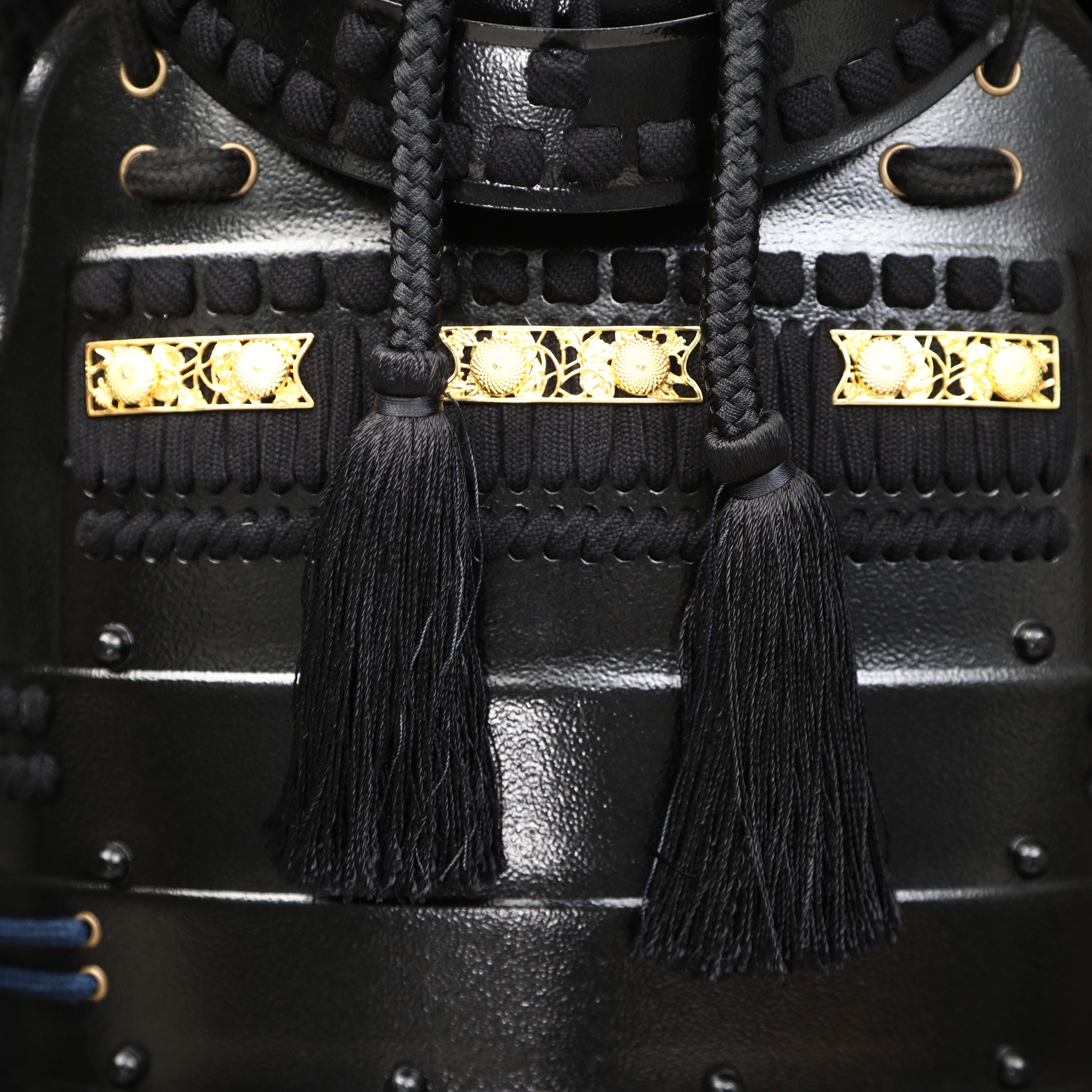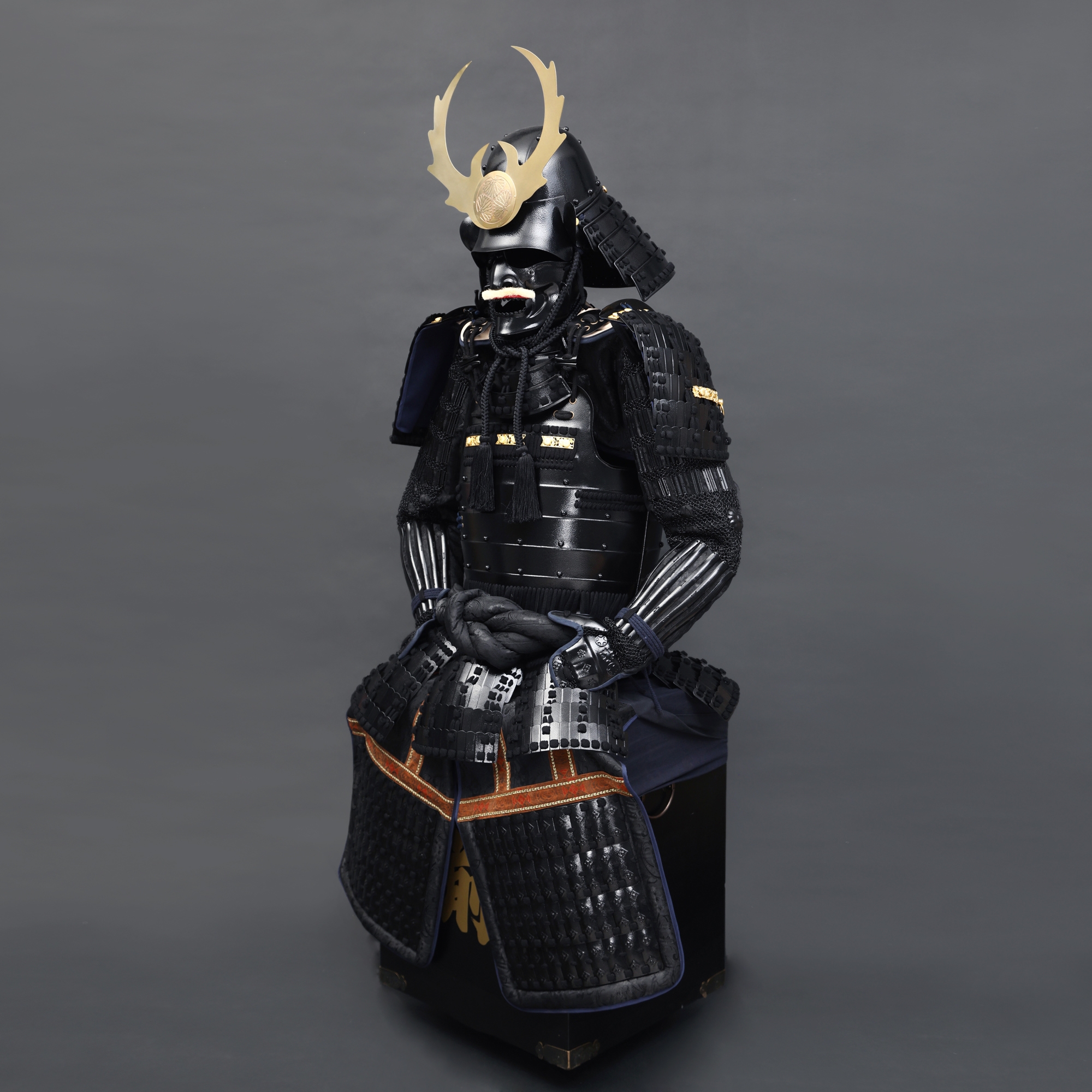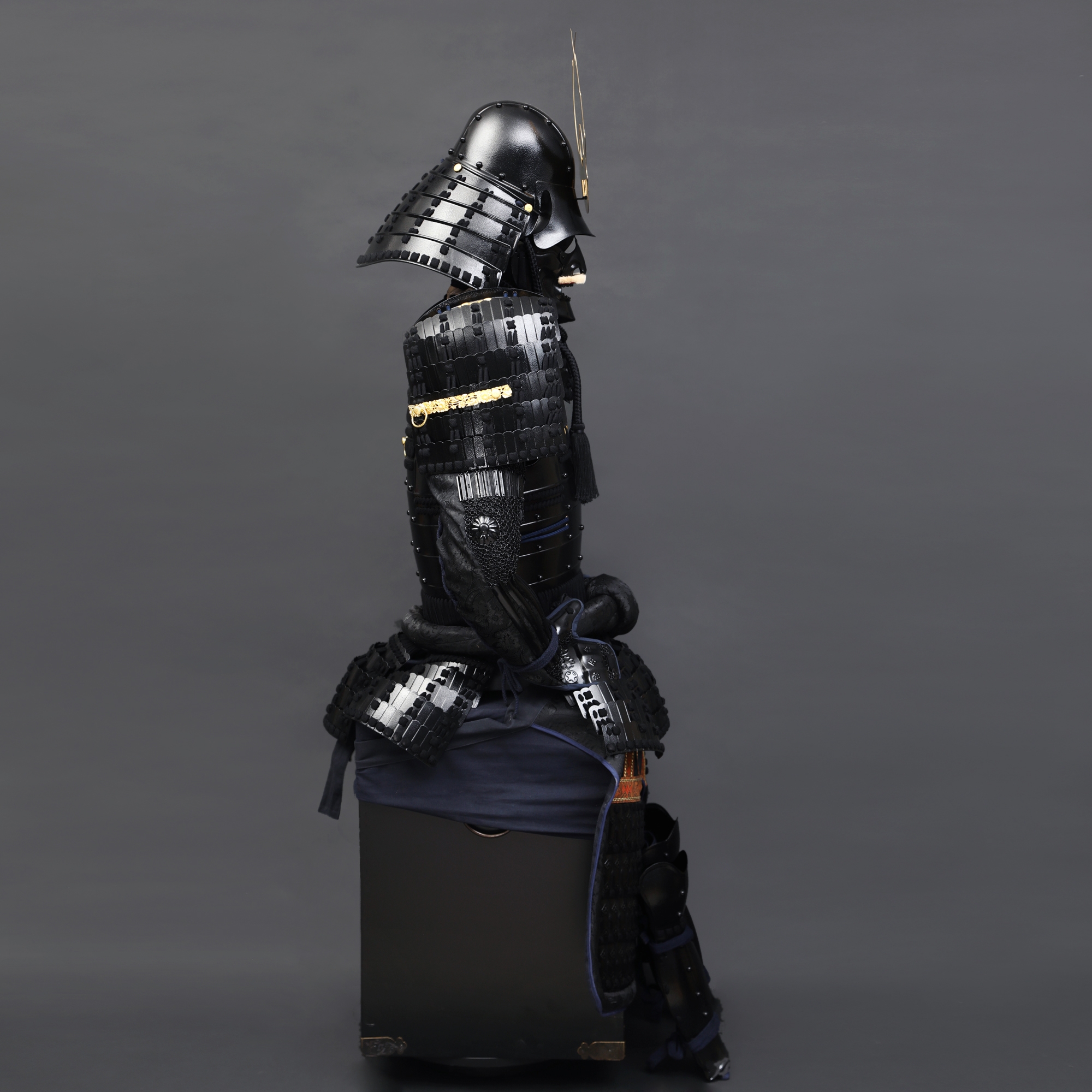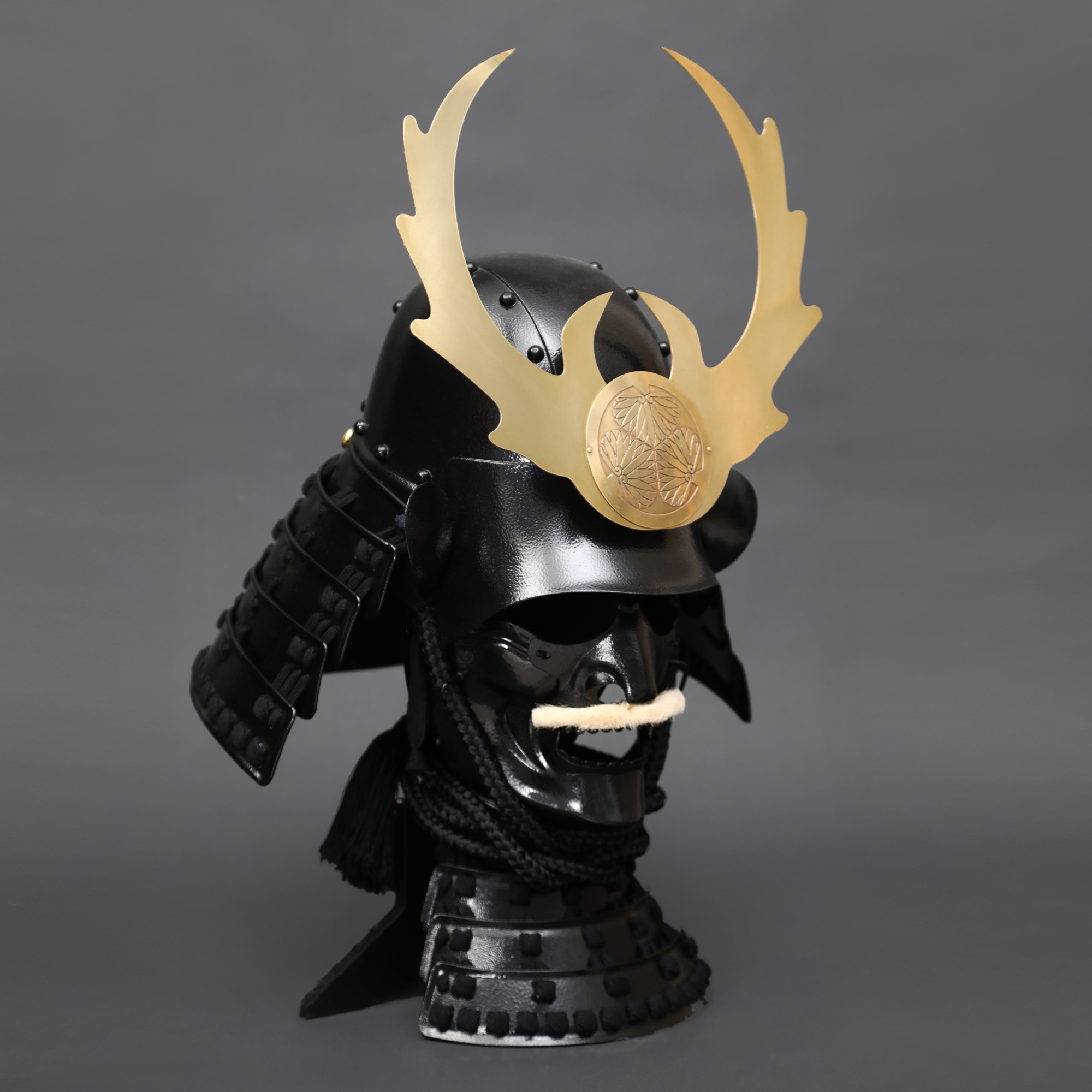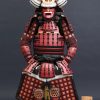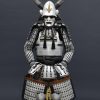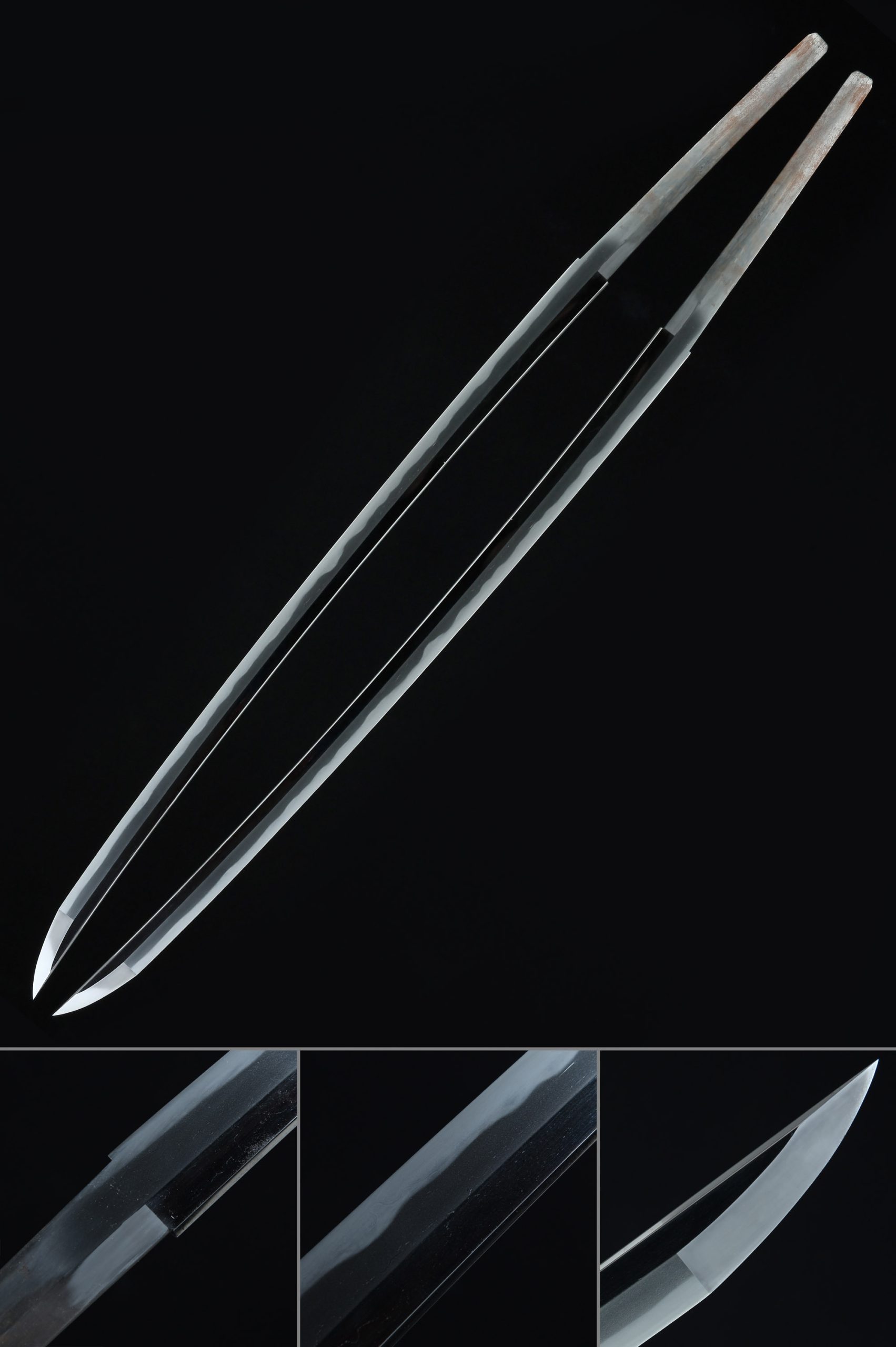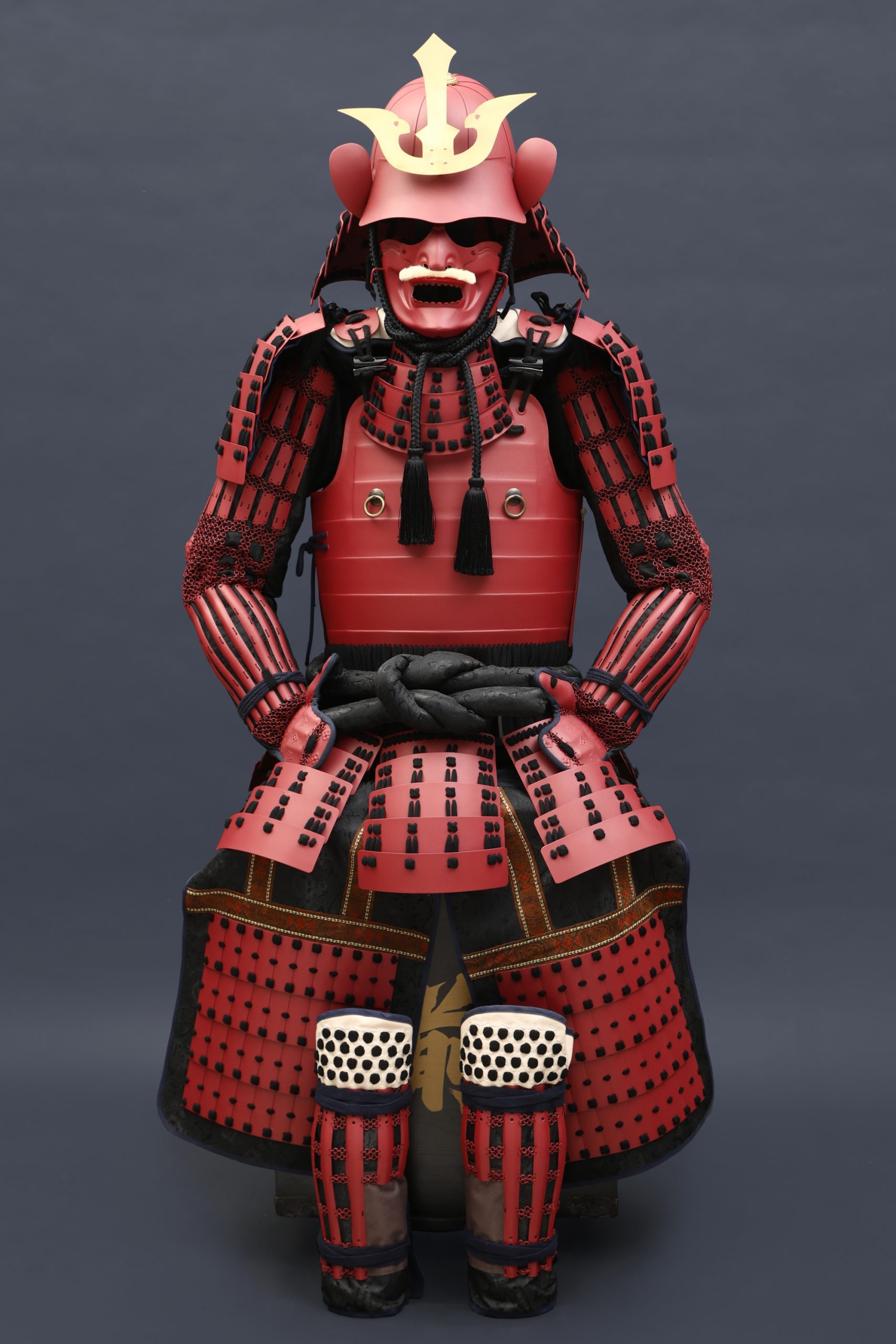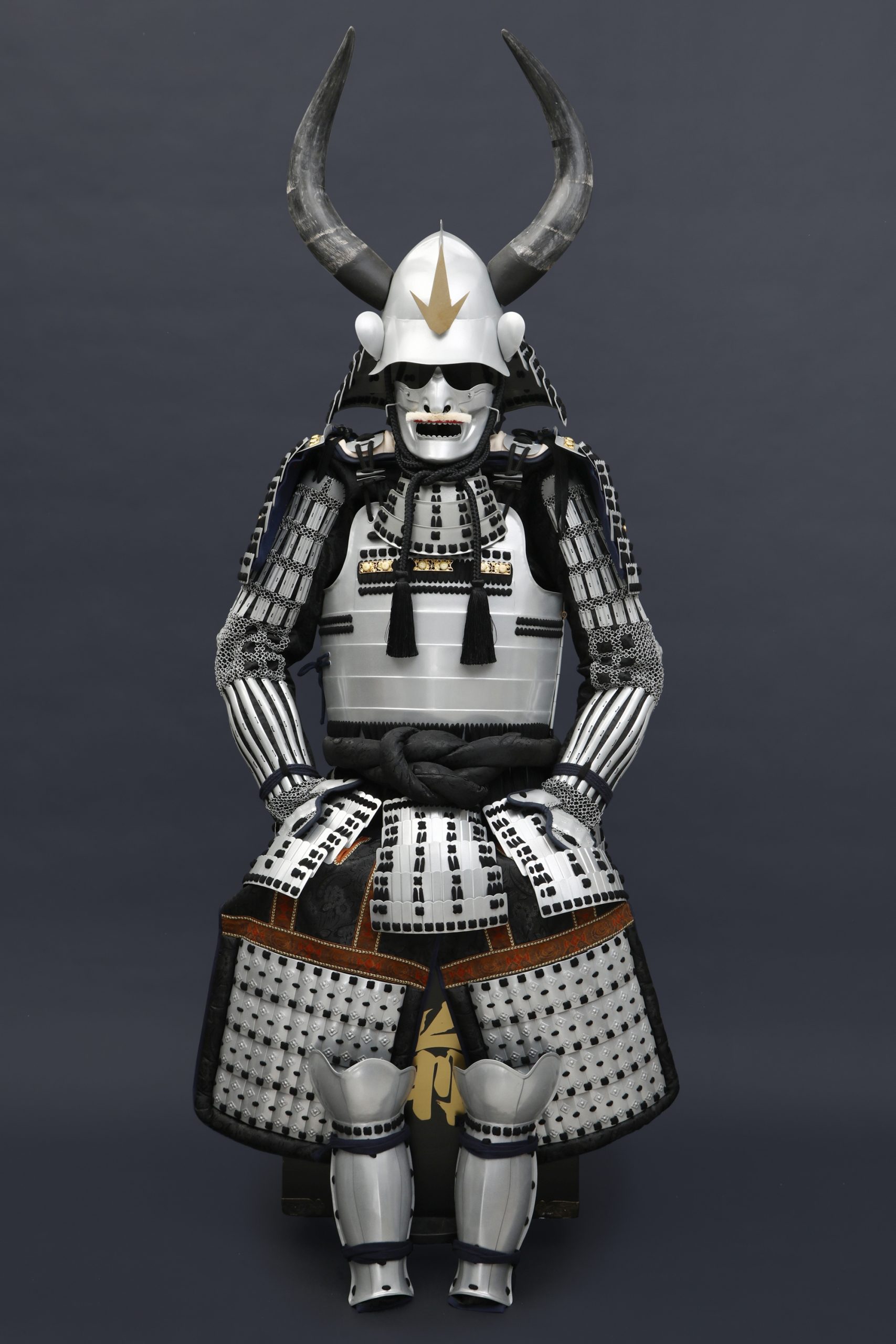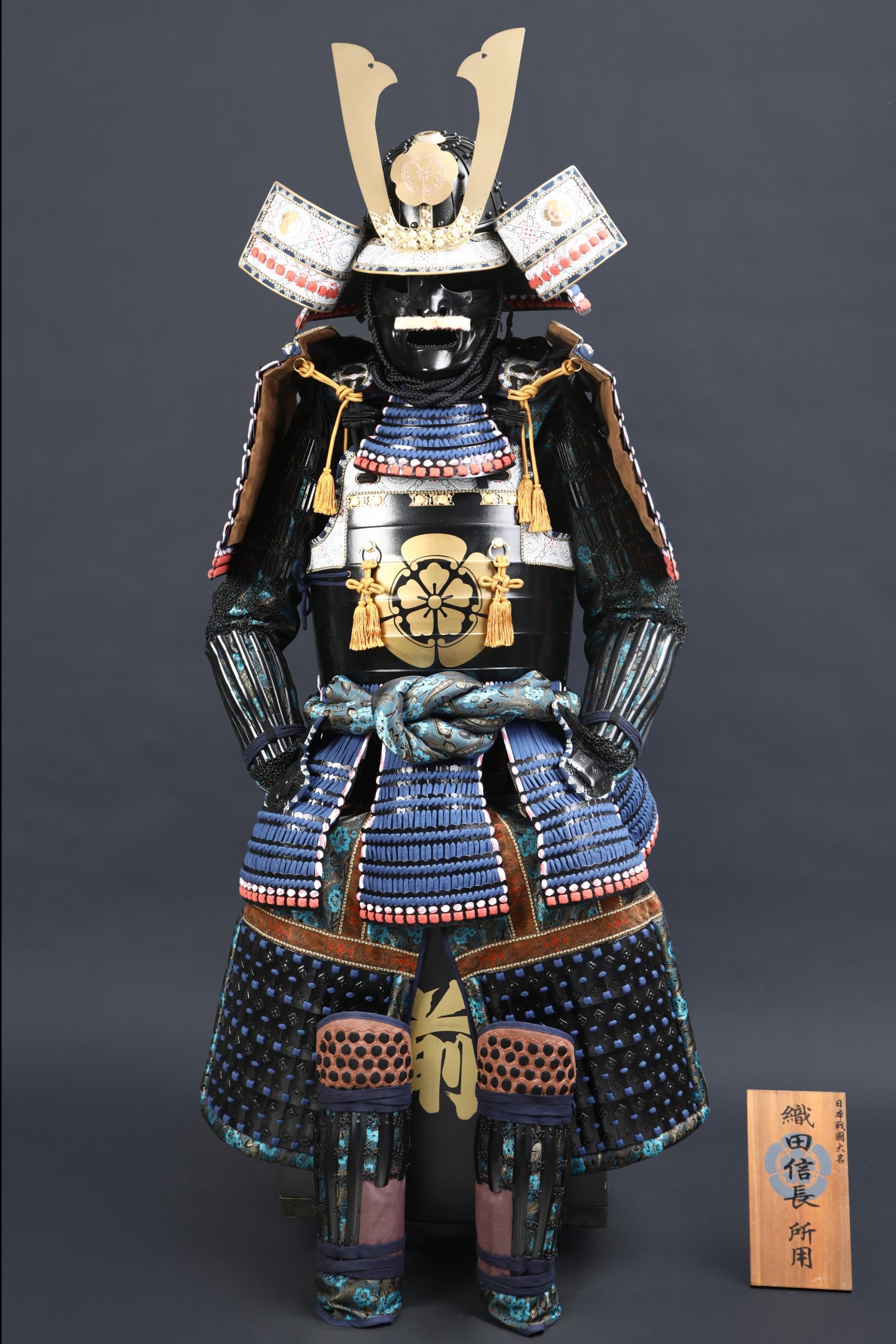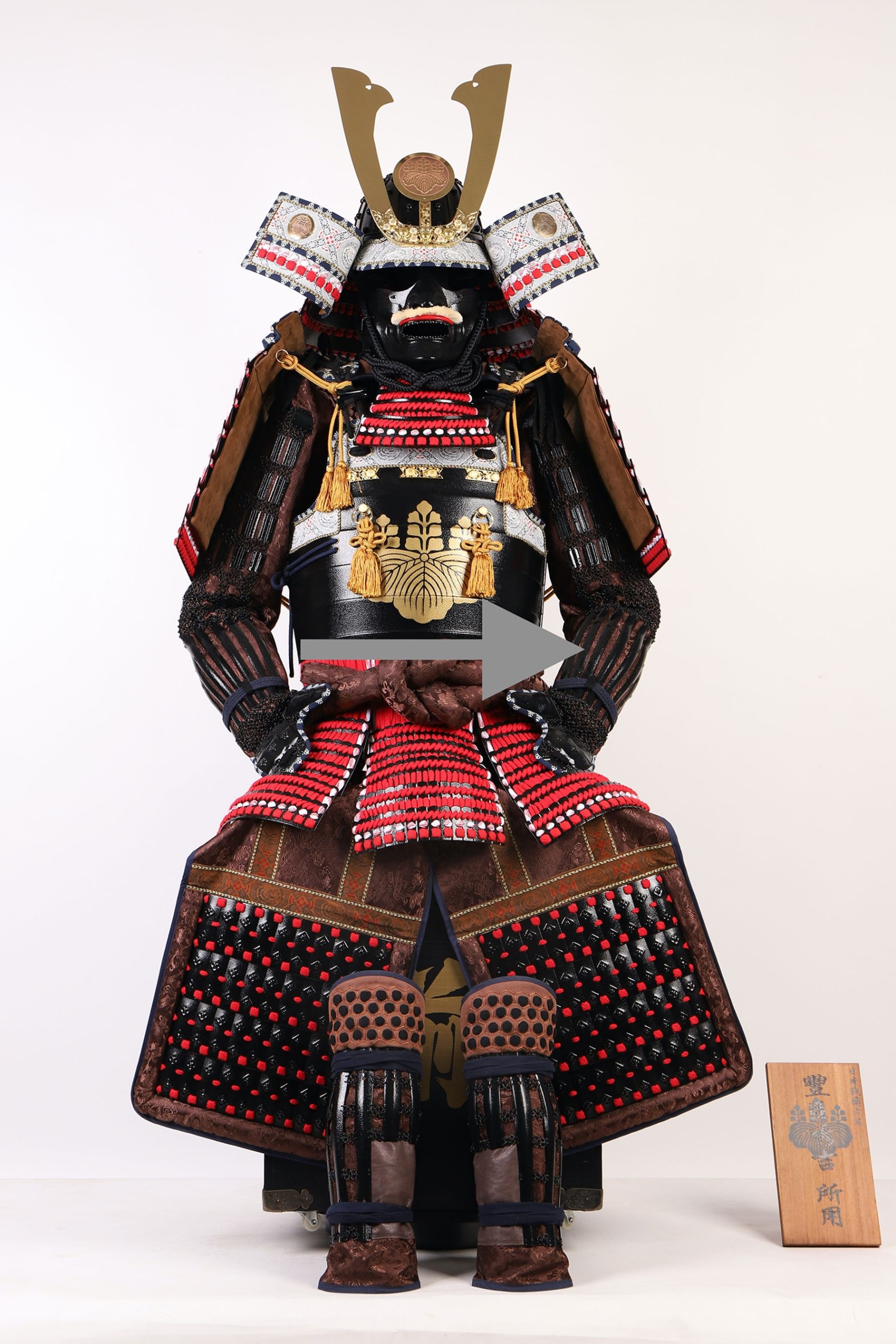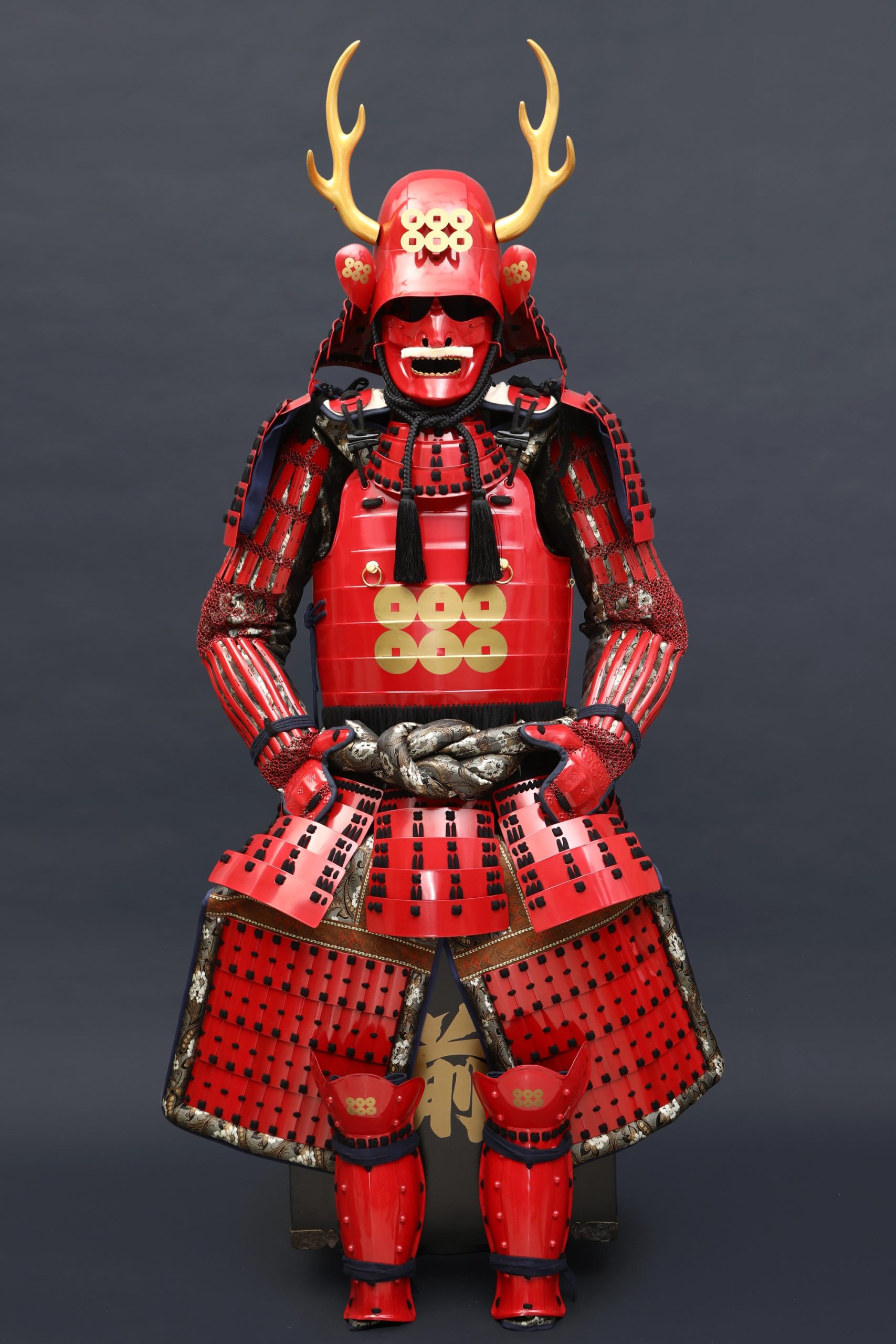Background History:
The Tokugawa Clan represented a powerful Daimyo Family descended from Emperor Seiwa (850-880 AD), in the early days of Imperial Japan. The origins of the Tokugawa Clan are shrouded in mystery. They had begun their ascent to power by 1567 A.D. The clan grew vastly during the Warring States Period, both in the samurai they commanded, and the lands they controlled. Members of the clan ruled Japan as Shoguns, or military commanders, from 1603 to 1867. Such was the influence and power of this clan that some historians actually refer to the ??The Edo Period?? as ??The Tokugawa Era?? instead. The Tokugawa were loyally served by many noble families. They include the Li Clan and the Honda Clan. This fine armor is a testimony to the Tokugawa. Tokugawa Ieyasu was the first of the Tokugawa Shogun, and third of the Three Great Unifiers of Japan. Born January 31 1543 at Okazaki Castle in Aichi Prefecture, the young Ieyasu, was sent as a hostage to the Imagawa clan by his father, Matsudaira Hidetada, who sought their help in the fight against the Oda. The Matsudaira clan were hemmed in by the Oda to the west, and the Imagawa to the northeast. Which of the rival warlords to ally themselves with caused much contention among the Matsudaira leaders, before Hidetada decided to support the larger, stronger Imagawa. Enroute to the Imagawa base castle at Suruga, the convoy was led by a maverick retainer of the Matsudaira clan to the enemy, Oda Nobuhide, who offered peace terms to the Tokugawa on such difficult conditions that Hidetada refused even at the risk of his young son??s life. Ieyasu was then confined to Nobuhide??s castle, where he may well have come into contact with Nobuhide??s son, Nobunaga, and at a Temple in Nagoya, where he endured many hardships. When the Imagawa attacked Anjo Castle and captured Oda Nobuhide??s son some three years later, Ieyasu was then handed over to the Imagawa in exchange. Ieyasu took part in the 1560 battle between the Imagawa Yoshimoto and the Oda Nobunaga at Okehazama, when 25,000 Imagawa soldiers were trounced by 2,500 Oda samurai. Ieyasu had been entrusted with delivering supplies to Odaka Castle when Nobunaga struck at the heart of the Imagawa encampment. With the death of Imagawa Yoshimoto, Ieyasu was at last free. Upon his return to Okazaki Castle he allied himself with Oda Nobunaga, who had indirectly brought about his freedom. Ieyasu faced near total defeat in 1573 when the Takeda clan attacked his northern provinces of Totomi in the Battle of Mikatagahara. Four years later, and with the assistance of Oda Nobunaga, we would get his revenge, decimating the Takeda forces at the Battle of Nagashino. Following the death of Nobunaga, Ieyasu would face off against Hideyoshi at the battle of Komaki Nagakute in 1584, although relations between the powerful men would later improve. On his deathbed in 1598, Hideyoshi, having ruled a unified nation for nearly 15 years, called for the then 56-year-old Ieyasu and entrusted the him to lead the council of regents who would attend to his five-year-old son and designated heir Toyotomi Hideyori. Ieyasu readily agreed and upon the death of the Taiko, or ??Great Chancellor?? as Hideyoshi was titled, installed himself in Hideyoshi??s sumptuous Fushimi Castle and immediately began to make moves to assume complete power of the country. His actions invoked the ire of a number of his contemporaries, many of whom openly condemned his plans, tearing the nation into two factions, east and west. These two great armies met on October 21, 1600 on the small plain of Sekigahara, the gateway between the mountains dividing the country, and where the strategically important arterial routes, the Tokaido and Nakasendo highways merged. Ieyasu would emerge victorious from what was to become the biggest, bloodiest, most decisive battle in samurai history. Three years after the Battle of Sekigahara, Ieyasu was invested with the title of Shogun, establishing a dynasty that would rule Japan for 260 years.
Product Introduction:
The Tokugawa clan black Japanese samurai armor with black Kabuto helmet suits are all 100% handmade, life sized, fully functional, and completely authentic preproduction Japanese Samurai Armor and helmets are made with authentic methods and materials. The Japanese samurai suit comes with everything you see in the photo, which includes the black lacquered display storage box and display stand holding the armor. Each armor comes pre-fitted for a person who stands between 5.5 and 6.0 feet tall with an average body type. The armor can be easily adjusted for a better fit by the owner. We also offer customized Armor, if needed, please provide the height, arm length, bust, waist, and length from the belly button to the chest.
- Full sized and fully functional armor, display size: 67*30*30 inches. standard size armor fits between 5.5 and 6.0 feet tall with average body type.
- Product weight: 44 lbs (armor and helmet only ), shipping weight: 55 lbs (includes the armor set and the black lacquered display storage box and display stand holding the armor.)
- Variation of paint, high quality cotton odoshi colors and traditional features.
- 100% handmade by experienced armor smith.
- Custom sizing available.
Specification
| Item Number | TK-KAS-21004 |
| Primary Color | black |
| Primary Material | Metal |
Item Dimensions & Packaging
| Dimensions | 67 * 30 * 30 Inches |
| Weight | 44.0 Pounds |
| Packing Size | 25 x 30 x 22 Inches |
| Shipping Weight | 55.0 Pounds |
| Weight | 0.1 kg |
|---|
